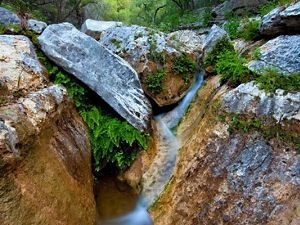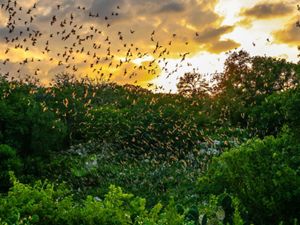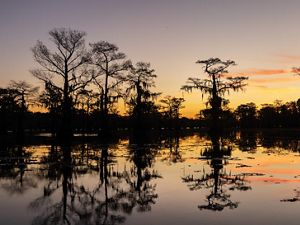Keeping Austin Weird and Wild
Five fantastic natural areas around ATX that The Nature Conservancy has had a hand in safeguarding.
For more than 30 years, The Nature Conservancy (TNC) has helped protect iconic natural places in and around Austin. Check out the top five local conservation areas that we've had a hand in protecting, and fall in love with them the same way we have!
1. Barton Springs
A summer in Austin isn't complete without an afternoon spent sunbathing in Zilker Park and dipping into the 68-degree waters of Barton Springs Pool. The pool is one of Austin’s most popular watering holes, pumping 32 million gallons of water each day and serving upwards of 400,000 people a year—natives, newcomers and people just dropping in on the capital city. It’s also the largest of four natural springs that comprise Barton Springs, and TNC has worked closely with the City of Austin to make sure it stays healthy. Our partnership has resulted in the protection of nearly 30,000 acres of land.

2. Edwards Aquifer
Many a Texas fortune has been made from oil, but another one of the world’s greatest natural resources is in Austin’s own backyard. The Edwards Aquifer is one of the most productive aquifers in the world and home to nearly a half-dozen unique and vulnerable species. The layers of limestone and sediment that comprise the aquifer are largely hidden underground, but their functions are impressive: the Edwards Aquifer discharges 900,000 acre feet of water every year, directly serving about two million people. Barton Springs is Austin’s main discharge point for the aquifer, and many of our conservation efforts have a direct impact on the highly sensitive recharge zone, which stretches some 1,250 square miles and filters water from area creeks.

3. Barton Creek Habitat Preserve
Our presence around Barton Creek isn’t just focused on the wet stuff—we’re all about wildlife as well. Nestled along four miles of Barton Creek in southwest Travis County, TNC's Barton Creek Habitat Preserve protects prime habitat for the golden-cheeked warbler and the black-capped vireo, two species of rare songbirds. The warbler, which nests exclusively in Central Texas, has seen its home destroyed by flooding, overgrazing and rampant development. Barton Creek Habitat Preserve provides about 2,500 acres of habitat for the warbler. It may not sound like much, but this land was once slated for development, including plans for 4,000 new homes.

4. Balcones Canyonlands Preserve
Tucked away just due west of the Austin proper lies the Balcones Canyonlands, a system of parks and preserves that encompass more than 32,000 acres in western Travis County. The acreage is made up of more than 140 individual tracts managed by both public and private partners. With a bevy of hiking trails and some amazing views, Balcones Canyonlands Preserve is on track to become the largest—and one of the most popular—urban preserves in the country. Early in its existence, TNC helped to add a 13,500-acre expansion to the preserve, which protects the golden-cheeked warbler and six endangered invertebrate species. The network of preserves also helps alleviate water quality issues within Austin’s Bull Creek.

5. Hamilton Pool
Mother Nature knew what she was doing at Hamilton Pool. Created when massive erosion collapsed the dome of an underground river, the natural pool is a gorgeous green grotto with moss-covered limestone walls and a 50-foot cascading waterfall, rivaling any Hollywood creation. It’s situated about 30 minutes west of Austin, and visitors flock to enjoy a serene swim and more than 230 acres of nature preserve. In a push to make a good thing better, TNC partnered with Travis County in 2011 to acquire nearly 800 acres of open land to connect Hamilton Pool Preserve and the neighboring Milton Reimers Ranch Park. The result: public access to another 4.5 miles along the Pedernales River, the conservation of 3,500 adjoining acres of the Texas Hill Country and the preservation of water quality at Hamilton Pool.

We Can’t Save Nature Without You
Sign up to receive monthly conservation news and updates from Texas. Get a preview of Texas's Nature News email.




